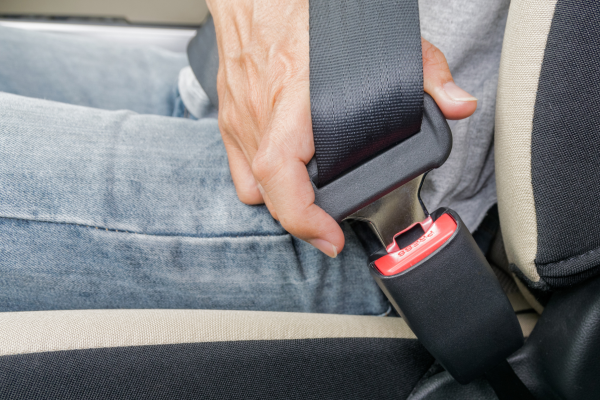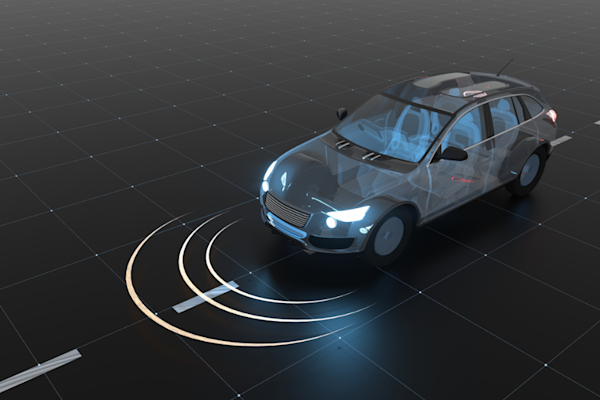Vehicle Safety
Resetting and Recalibrating Your Seat Belt System: A How-To Guide

Resetting and Recalibrating Your Seat Belt System: A How-To Guide
Understanding Your Seat Belt System
Seat belts are a critical component of your vehicle's safety system. Designed to protect occupants during collisions, it's crucial to maintain them in optimal condition. Over time, the seat belt system can experience wear and tear, necessitating resetting and recalibration for them to function correctly.
Why Resetting and Recalibrating is Important
Resetting and recalibrating your seat belt system ensures it operates effectively, offering you the maximum protection during an accident. Faulty seat belts can result in severe harm or failure to comply with safety regulations. Regular maintenance can help extend the longevity of the system and keep you safe on the road.
Tools You Will Need
- Screwdriver
-
- Socket wrench set
-
- Replacement parts (if necessary)
-
- Owner's manual
-
- Safety gloves
-
Step-by-Step Guide to Resetting Your Seat Belt System
-
Step 1: Locate the Seat Belt Mechanism
- First, identify the position of the seat belt mechanism. This is typically found near the base of the seat or behind the trim panel of the car door.
-
Step 2: Disconnect the Battery
- Before starting any repairs, disconnect the car battery to prevent accidental deployment of the airbags.
-
Step 3: Remove the Seat Belt
- Use a screwdriver and a socket wrench to carefully remove the seat belt assembly from its position. Make sure to keep the screws and bolts in a safe place for reassembly.
-
Step 4: Inspect the Components
- Check the seat belt for any visible signs of wear or damage. Look out for frayed belts, broken mechanisms, or any parts that may need replacement.
-
Step 5: Install Replacement Parts
- If you have identified any worn-out components, install the replacement parts as per the instructions in the owner's manual. Ensure everything is securely fitted and aligned properly.
-
Step 6: Reassemble the Seat Belt
- Once you have inspected and replaced any necessary parts, reassemble the seat belt system by reversing the removal process. Make sure all bolts and screws are tightened securely.
-
Step 7: Reconnect the Battery
- After the seat belt system is reassembled, reconnect the car battery and test the seat belt to ensure it is working correctly.
-
Recalibrating Your Seat Belt System
-
Step 1: Resetting the Seat Belt Sensor
- Modern vehicles come with seat belt sensors that require recalibration after adjustments. Refer to your owner's manual for instructions on how to reset the sensor. This often involves a series of plug-ins and disconnections.
-
Step 2: Use Diagnostic Tools
- Use an OBD-II scanner to check for any diagnostic trouble codes (DTCs) related to the seat belt system. Clear any existing codes and follow the scanner's prompts to recalibrate the system.
-
Step 3: Professional Assistance
- If you are unsure or unable to recalibrate your seat belt system, it's advisable to seek professional assistance. A certified mechanic can properly diagnose and recalibrate the system to ensure full functionality and safety.
-
Maintenance Tips
-
- Regularly inspect the seat belts for any wear and tear.
-
- Replace any damaged or frayed belts immediately.
-
- Clean the seat belts with mild soap and water to maintain flexibility and cleanliness.
-
- Avoid using harsh chemicals that may damage the fabric or webbing.
- Resetting and recalibrating your seat belt system is essential for your safety and the overall longevity of your vehicle. Following this guide will help you maintain your seat belts in optimal condition, ensuring they provide the necessary protection during every journey. Remember, if you have any doubts or encounter issues during the process, don't hesitate to consult a professional mechanic.
Resetting and Recalibrating Your Seat Belt System: A How-To Guide
Understanding Your Seat Belt System
Seat belts are a critical component of your vehicle's safety system. Designed to protect occupants during collisions, it's crucial to maintain them in optimal condition. Over time, the seat belt system can experience wear and tear, necessitating resetting and recalibration for them to function correctly.
Why Resetting and Recalibrating is Important
Resetting and recalibrating your seat belt system ensures it operates effectively, offering you the maximum protection during an accident. Faulty seat belts can result in severe harm or failure to comply with safety regulations. Regular maintenance can help extend the longevity of the system and keep you safe on the road.
Tools You Will Need
- Screwdriver
-
- Socket wrench set
-
- Replacement parts (if necessary)
-
- Owner's manual
-
- Safety gloves
-
Step-by-Step Guide to Resetting Your Seat Belt System
-
Step 1: Locate the Seat Belt Mechanism
- First, identify the position of the seat belt mechanism. This is typically found near the base of the seat or behind the trim panel of the car door.
-
Step 2: Disconnect the Battery
- Before starting any repairs, disconnect the car battery to prevent accidental deployment of the airbags.
-
Step 3: Remove the Seat Belt
- Use a screwdriver and a socket wrench to carefully remove the seat belt assembly from its position. Make sure to keep the screws and bolts in a safe place for reassembly.
-
Step 4: Inspect the Components
- Check the seat belt for any visible signs of wear or damage. Look out for frayed belts, broken mechanisms, or any parts that may need replacement.
-
Step 5: Install Replacement Parts
- If you have identified any worn-out components, install the replacement parts as per the instructions in the owner's manual. Ensure everything is securely fitted and aligned properly.
-
Step 6: Reassemble the Seat Belt
- Once you have inspected and replaced any necessary parts, reassemble the seat belt system by reversing the removal process. Make sure all bolts and screws are tightened securely.
-
Step 7: Reconnect the Battery
- After the seat belt system is reassembled, reconnect the car battery and test the seat belt to ensure it is working correctly.
-
Recalibrating Your Seat Belt System
-
Step 1: Resetting the Seat Belt Sensor
- Modern vehicles come with seat belt sensors that require recalibration after adjustments. Refer to your owner's manual for instructions on how to reset the sensor. This often involves a series of plug-ins and disconnections.
-
Step 2: Use Diagnostic Tools
- Use an OBD-II scanner to check for any diagnostic trouble codes (DTCs) related to the seat belt system. Clear any existing codes and follow the scanner's prompts to recalibrate the system.
-
Step 3: Professional Assistance
- If you are unsure or unable to recalibrate your seat belt system, it's advisable to seek professional assistance. A certified mechanic can properly diagnose and recalibrate the system to ensure full functionality and safety.
-
Maintenance Tips
-
- Regularly inspect the seat belts for any wear and tear.
-
- Replace any damaged or frayed belts immediately.
-
- Clean the seat belts with mild soap and water to maintain flexibility and cleanliness.
-
- Avoid using harsh chemicals that may damage the fabric or webbing.
- Resetting and recalibrating your seat belt system is essential for your safety and the overall longevity of your vehicle. Following this guide will help you maintain your seat belts in optimal condition, ensuring they provide the necessary protection during every journey. Remember, if you have any doubts or encounter issues during the process, don't hesitate to consult a professional mechanic.


